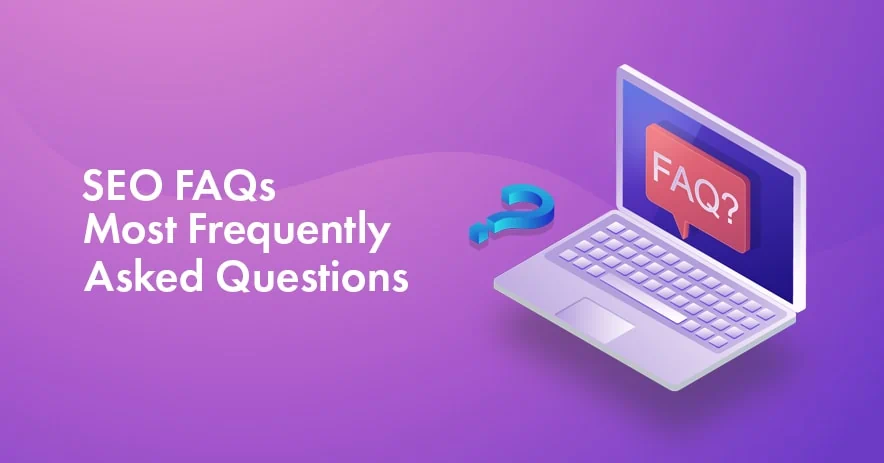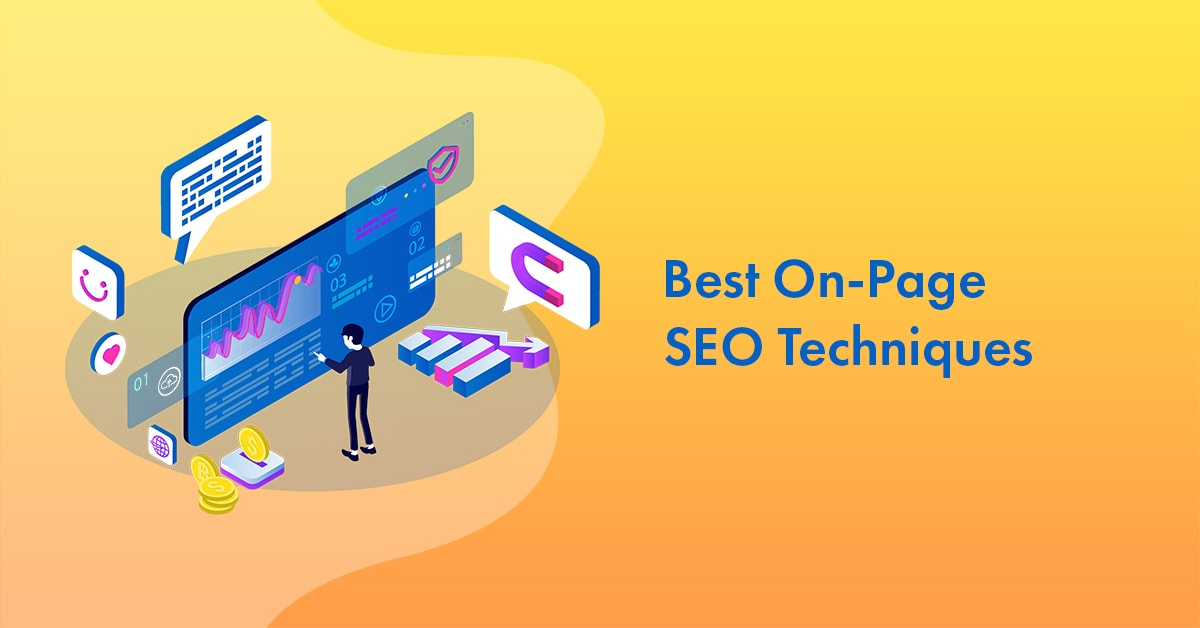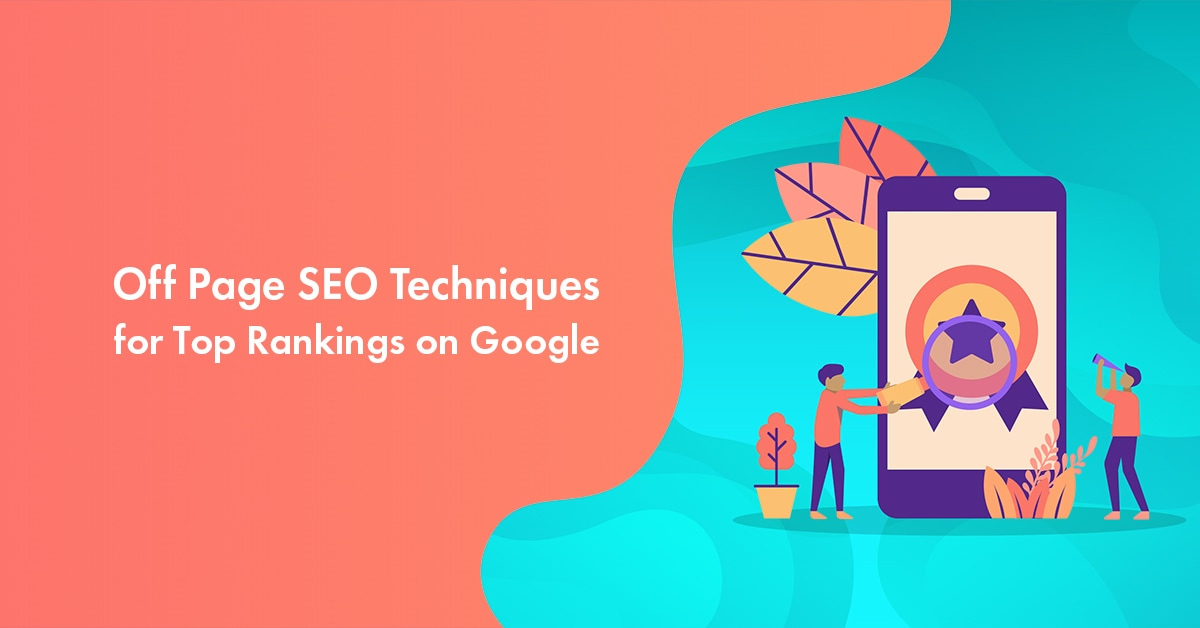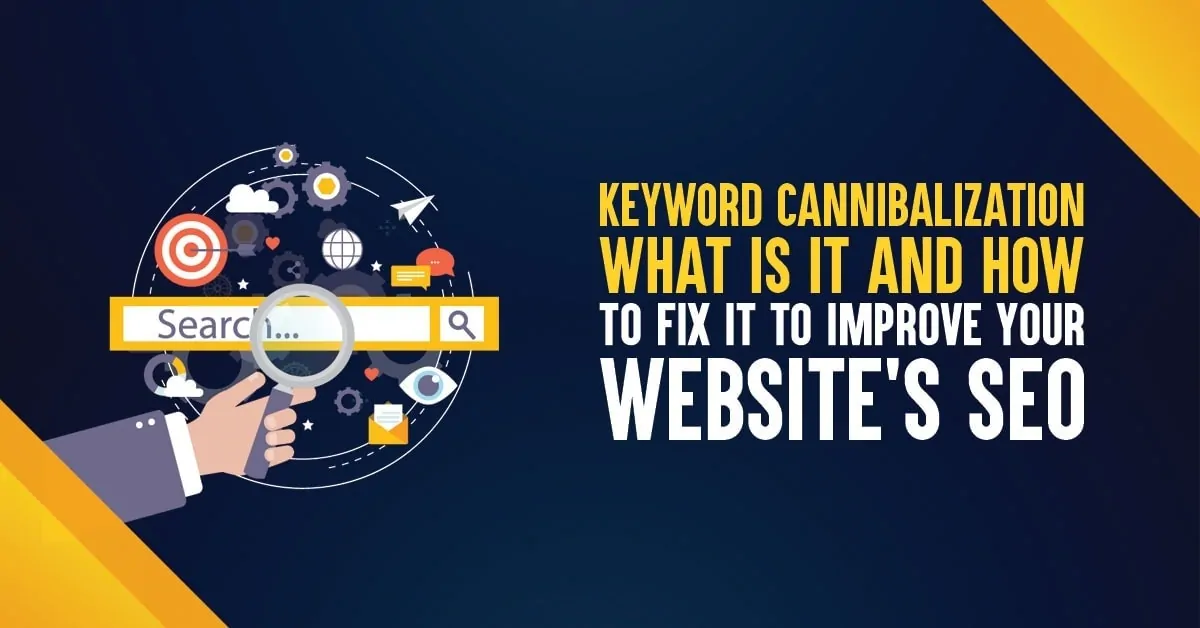Are you looking for an SEO glossary that explains a few SEO terms in plain English?
SEO is a complex topic. You’ll be overwhelmed with a lot of terms, especially if you’re new to SEO.
That’s why we’ve published this post which contains a ton of terms, from basic concepts to advanced techniques.
In this post, you’ll discover the following;
- Definitions for most SEO terms
- Their benefits or drawbacks (for a few SEO definitions)
- FAQs and more
SEO Glossary: 100+ Terms and Definitions Explained
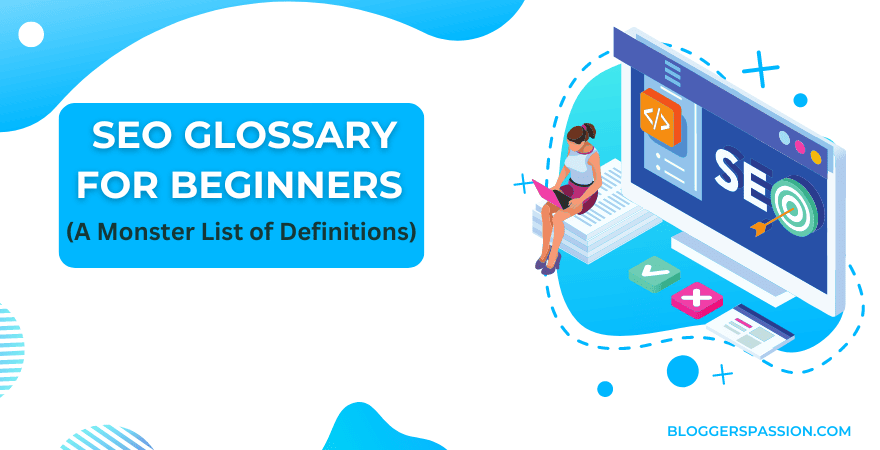
Are you ready? Let’s get into the details.
Accelerated Mobile Pages (AMP): It is an open-source HTML framework launched by Google. These are incredibly lightweight pages that are aimed to give mobile users a superfast experience. AMP itself isn’t a ranking factor in Google searches.
Above the Fold: It is simply the upper part of a web page. It also refers to the part of a web page that is visible to website users without scrolling. Any content you need to scroll down to read would be considered ‘below the fold.’
Algorithm: Algorithms or Google algorithms are “several factors” that Google uses to rank web pages in the search results. These factors include user experience, content quality, expertise, backlinks, etc.
Alt Text: It is also known as ALTERNATE text, which is a short description of an image. ALT text provides the “meaning of the images” you use within your blog posts or web pages.
Anchor Text: Anchor text is the clickable text in a hyperlink. Using descriptive anchor text while linking to other pages is a better SEO practice. It helps search engines like Google to understand the context of the link.
AI Content: AI content can be considered as “automated content” that is created by artificial intelligence tools like ChatGPT, Google Bard, Jasper AI, etc. It’s better NOT to rely 100% on such AI content to build authority or improve your search rankings.
Backlink: A backlink is a link from another website to your own website. Backlinks are extremely helpful in building your site’s authority and improving your search traffic.
Black Hat SEO: Black Hat SEO refers to the techniques used to manipulate search engine rankings (mostly by violating search engine guidelines). These techniques include doorway pages, keyword stuffing, cloaking, etc.
Bounce rate: The percentage of visitors who leave your site after viewing or reading only one web page. High bounce rates often lead to bad conversions.
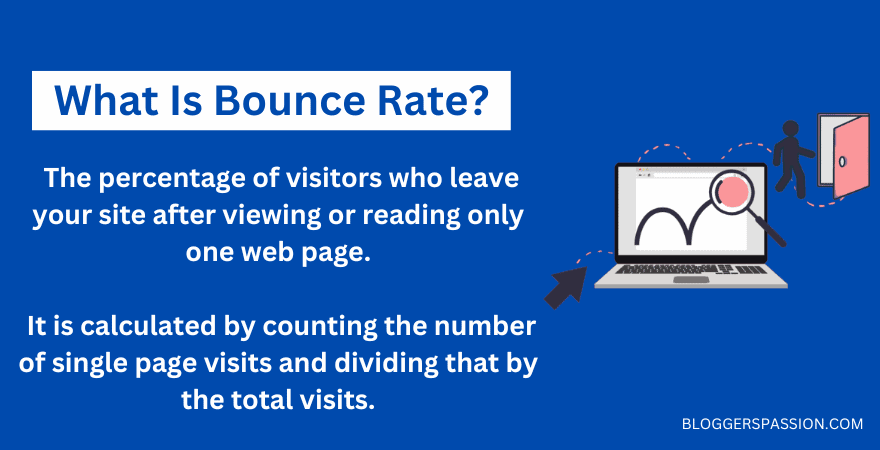
Breadcrumbs: Breadcrumbs in SEO are navigation elements that show users their current location on a website, which ultimately help you with better crawling and user experience.
Canonical URL: A canonical URL is a URL of the MAIN version of a page when you have duplicate versions of the same page. This can be considered the preferred URL for a web page. These URLs help prevent duplicate content issues.
Cloaking: The practice of showing different content to search engines and users. It’s a bad practice used to manipulate search engines and can lead to website penalties.
Crawler: A crawler is an online bot (or program) search engines use to crawl and index websites.
Click-Through Rate (CTR): CTR is the percentage of people who click on a specific link out of the total number of impressions (people who see the link). CTR = clicks ÷ impressions. For example, if you had 10 clicks and 100 impressions, your CTR would be 10%.
Custom 404 Page: A custom 404 page (also known as an error page) is displayed when a website user tries to access a non-existent page on a website. You can create custom 404 pages to display high-traffic posts or pages on your website.
CSS (Cascading Style Sheets): CSS is a coding language used to format HTML documents. It adds style (such as fonts, colors, spacing, etc.) to web documents.
Call to Action (CTA): CTA is a prompt on a web page that encourages your website visitors to take a specific action, such as signing up for a newsletter, following your Facebook page, or making a purchase.
Duplicate Content: This content refers to content that appears in multiple locations on the Internet. Duplicate content can negatively impact your website’s search engine rankings, as Google prefers unique and helpful content. You can use tools like Copyscape to find duplicate content.
Disavow: Disavowing in SEO means informing search engines to take manual action against your site for unnatural links. It is a process of telling Google that specific links on your site should be ignored or discounted. If you’ve spammy links, you can use this functionality.
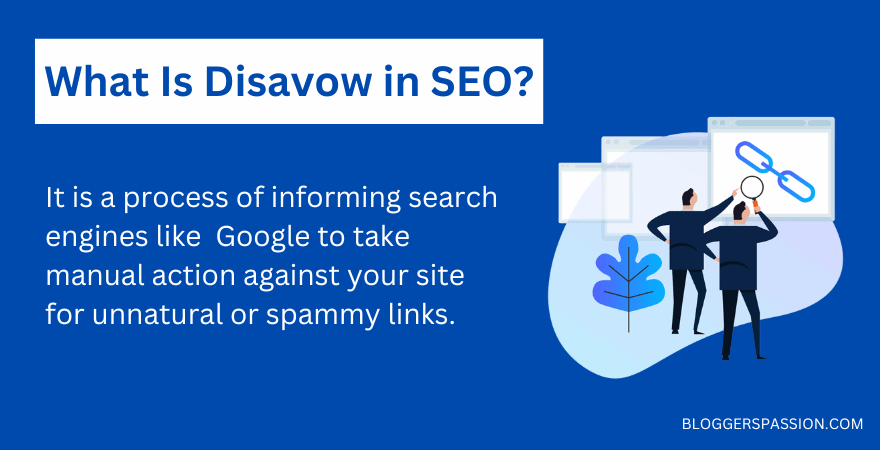
Dwell Time: The average amount of time a person spends on a page within a website before returning to the search results. If a page has less dwell time, the searcher is NOT happy with the result.
Directory Submission: It is a link building strategy where you submit a website’s URL to online directories. This is an off-page SEO tactic to build backlinks to a website.
Doorway Pages: These pages are created specifically for search engines to rank well but offer ZERO value to the users. It is a bad practice and can result in poor website rankings.
Dofollow Link: This is a link that passes link juice (or link authority and SEO value) from one page to another.
E-A-T: It stands for Expertise, Authoritativeness, and Trustworthiness. Recently, Google also introduced another E, now it became E-E-A-T, and the extra “E” refers to Experience. These factors are considered by Google to evaluate the quality, authority, and credibility of a website.
External Link: A hyperlink that points from one website to another external website.
Evergreen Content: This type of content stays relevant even after a few years. It helps you maintain the same traffic levels and attracts new visitors if your content is excellent.
Engagement Metrics: These metrics measure how users interact with your website’s content. These can include,
- Time on page/site
- New vs. returning visitors
- Bounce rate
- CTR
Exact Match Domain (EMD): A domain name with an EXACTLY matched keyword or search term. These are used to get better search rankings for that specific keyword.
Exit Rate: The percentage of visitors who leave a website from a specific page, often used to analyze the effectiveness of landing pages or user flow.
Featured Snippets: Featured Snippets are short snippets of text that appear at the top of Google’s search results. These are introduced by Google to help people find information quickly for a few popular searches. These are also known as “Position Zero” searches.
Freshness: “Freshness” is an essential ranking factor in search algorithms, as it prioritizes newer, fresh, and recently updated content for most queries or keywords.
First Link Priority: If you’re linking to the same web page twice (or more than two times), Google will ALWAYS prioritize the FIRST link.
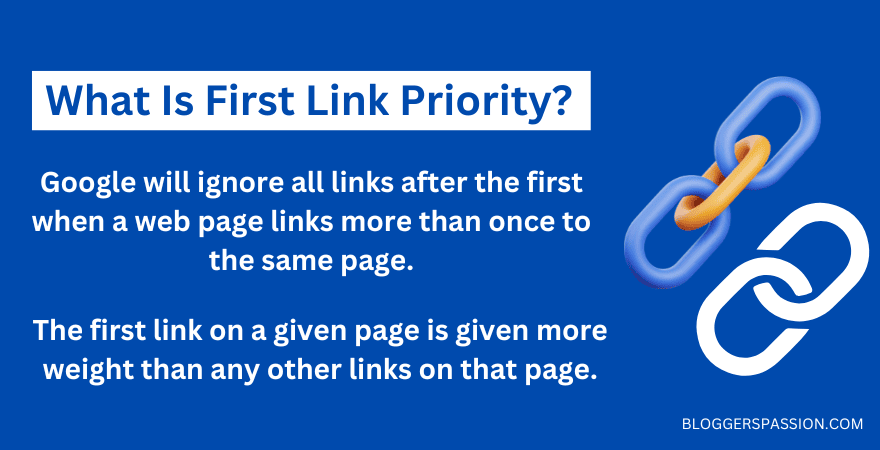
Footer Links: These links appear in a website’s bottom section (often known as the “footer”).
First Contentful Paint (FCP): A performance metric that measures the time it takes for the FIRST piece of content to appear on a page.
Focus Keyword: It can be considered the PRIMARY target keyword or search phrase that a webpage is optimized for to improve its organic rankings.
Google Analytics: This is a FREE website analytics tool provided by Google to track website traffic and user behavior.
Google My Business (GMB): This is another free tool provided by Google that helps businesses to create and manage their online presence. Businesses can show their information, such as website URL, email, phone number, etc.
Google Search Console: A free tool introduced by Google that helps website owners monitor their website’s presence in Google search results. You can check your website’s indexing status, search queries, and crawling errors.
Google Panda: A Google algorithm update introduced by Google in 2011 to punish low-quality websites with thin content.
Google Penguin: A Google algorithm update released by Google in 2012 to punish websites that use spammy SEO practices to build links.
Google Pigeon: A Google algorithm update launched in 2014 to improve the rankings of local businesses in search results. This update helps deliver more relevant and accurate results to users looking for local businesses ranked in organic search.
Google RankBrain: It is a machine learning-based search engine algorithm released by Google in 2005 to provide more relevant search results for users.
Guest blogging: Guest blogging (or guest posting) is a link building strategy where you create free content for other websites in exchange for getting backlinks to your site.
Google Trends: It is a free tool run by Google that analyzes the popularity of top search queries across various countries.
H1 tag: This is probably the most important heading tag on a webpage. It is often used to identify the main topic or subject of the page.
H2 tag: This is a secondary heading tag used to identify the page’s subtopics.
H3 to H6 tags: These tags are used to identify even smaller subtopics of the page. H3 is the highest section level, and H6 is the lowest.
Hreflang: Hreflang is an HTML attribute used to specify a webpage’s language and geographical targeting. This tag allows search engines to provide the appropriate version of that page based on the searcher’s country (or their language settings).
Homepage: This is the website’s primary or main page, typically the page visitors see when they first land on your website.
Hub: A hub (or content hub) is a curated collection of organized content about ONE specific topic. These are also known as “topic clusters.”
.htaccess File: .htaccess (hypertext access) is a hidden file that lets you configure the details of your website without altering the Apache server. You can configure different things like redirects, IP management, and more.
HTML (Hypertext Markup Language): It is a primary markup language used to create web pages and web applications.
HTTPS: Hypertext Transfer Protocol Secure (HTTPS) is an extension of the Hypertext Transfer Protocol (HTTP). It is mandatory for all websites and online stores as it encrypts all information sent between a client’s website and a web service.
Image SEO: Image SEO is the practice of optimizing your website’s images for search engines. It involves using relevant keywords in the image, including its alt text, filename, and caption.
Inbound link: This is a link from another website to your website. If Google were to link to our website BloggersPassion, that would be an inbound link to BloggersPassion. Inbound links can be super helpful as they signal search engines that your website is authoritative.
Indexing: Indexing is a process by which search engines like Google organize information before a search to provide FASTER responses to queries. It can also be considered a “database” where search engines store and retrieve information while crawling websites.
Internal link: These are hyperlinks from one page on your website to another page on your website.
JavaScript (JS): It is a just-in-time compiled programming language that is used to create dynamic and interactive web content.
Jump link: this is a type of link that helps your website visitors navigate your content more quickly. They allow you to create links to specific sections of your webpage or article. These links take you to a specific part of a webpage.
Keyword: A word or phrase that a person enters into a search engine such as Google or Yahoo to find information about a topic or product.
Keyword research: The process of researching keywords that are relevant to your website. It is often done to drive more search traffic to your website.
Keyword cannibalization: This is an SEO issue that happens when two or more pages on your website target the same keyword. It is an issue because it confuses search engines to understand which of those pages to rank. It’s like you’re connbibalizing your own website results such as clicks, content, optimization, etc.
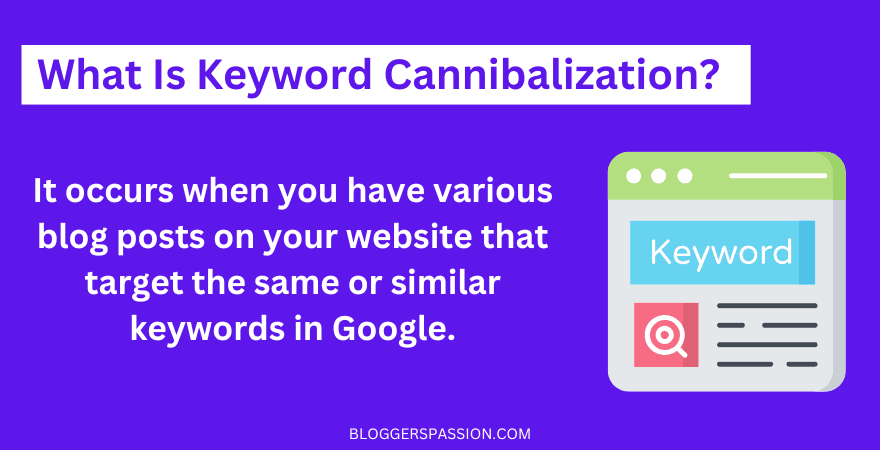
Keyword clustering: This is a good practice of grouping of related keywords into clusters. It can help you with better keyword research and to create HIGHLY relevant content that is optimized for multiple keywords.
Keyword Difficulty (KD): It is a metric that measures how difficult it is to rank for a particular keyword or search query. The keyword difficulty score ranges from 0 to 100, 0 being the easier to rank and 100 being the most difficult.
Keyword density: This shows the percentage of times a keyword appears on the same page. If the keyword density is high, search engines consider it as a “spammy technique” and many punish your pages from getting better rankings.
Keyword stuffing: It is a bad SEO practice of using too many SAME keywords on a page to rank higher in search results. It can lead to website penalty as search engines consider it as a spammy technique.
Keyword Prominence: It is a good SEO practice that refers to the position of your keywords in your “prominent places” on a page such as meta description, heading tags, image ALT tags, subheadings, etc. The closer a keyword appears toward the beginning of titles and other important places, the more prominent it is.
Knowledge panel: It is an information box that appears on Google (top right side on “desktop only”) when you search for certain people, places, organizations, etc.
KPI (Key performance indicator): These are metrics used to measure a website’s performance. These metrics can include average customer value, their visit time, search visibilty, organic click-through rate, etc.
Link building: The process of building links to your website from other websites. It improves the overall trustworthiness and authority of your website.
Link juice: Link juice (or link authority) is a link’s value passed from one page to another. The more links pointing to a web page often, the better link juice, which helps with the better ranking of the pages that receive it.
Long-tail keyword: A keyword phrase that is generally made from three or more words. These keywords are less competitive than short-tail keywords and are often easier to rank for.
Link bait: This type of content is specially created to attract backlinks from other websites. This content includes ultimate guides, monster list posts, how-to tutorials, etc.
Link Exchange: This is a type of mutual agreement between two (or more) websites to link to each other to build links.
Link Reclamation: This is a link building strategy where you try to regain lost links. You can use tools like Semrush to easily find lost backlinks.
Local Business Schema: This structured data markup code that can be added to your business’ website to optimize for local SEO.
Local Citation: It refers to any mention of your company online, such as your company’s name, phone name, address, etc.
Local SEO: It is the process of optimizing a website or business to be found in local search results. Any business that has a physical location can be benefitted from local SEO.
Read: Local SEO Checklist: 5 Ways to Rank Higher in Local Search Results
Meta description: This is a brief description of a web page that appears in search engine results (under the title). Compelling meta descriptions can help improve click-through rate (CTR).
Mobile-friendly website: A website that can be effortlessly viewed on mobile devices.
Meta tags: These tags tell search engines important information about your web pages, including titles, meta description, image alt tags, etc.
Negative keywords: These are words or phrases that you tell Google not to show your ads for. For example, if you sell eBooks, you might want to add the negative keyword “free” to prevent your ads from appearing for searches like “free ebooks.”
Negative SEO: This is a bad SEO practice of trying to destroy the search rankings of another website. It includes things like creating spammy backlinks, negative reviews, bad user ratings, etc to the target website.
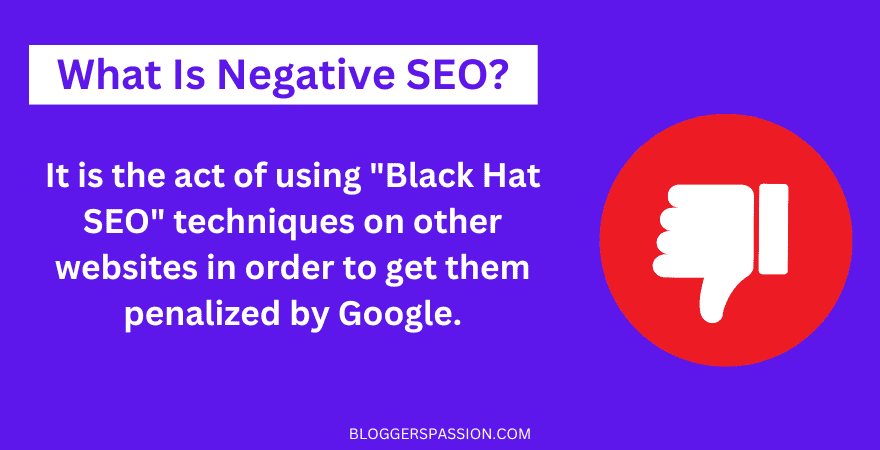
Nofollow links: These links tell search engines NOT to use the links for page ranking calculations. Search engines ignore passing link juice or authority to such links.
Navigation: This can be considered as a “menu” that lets website users move around a website. Good website navigation leads to better user experience and lower bounce rates.
On-page SEO: This is the process of optimizing a website’s content, code, and structure to improve its ranking in search results. On-page SEO factors include things like keyword usage, title tags, meta descriptions, and page speed.
Off-page SEO: It refers to all the actions implemented outside your website to improve search rankings. These things include link building, getting reviews, mentions, etc.
Outbound links: These are links that point from one website to another.
Organic search: These are the search results where you get FREE listings. You can use organic search to find websites through unpaid search results.
Over-optimization: This is a bad SEO practice where you try to optimize your pages too much for search engines. This is usually done by targeting one or two keywords and plastering them all over the page.
Open Graph meta tags: These snippets (or previews) control how URLs are displayed when they’re shared on social media sites like Facebook, Twitter, etc. These tags show essential information such as page title, image, and description.
Orphan page: This is a webpage without ANY internal links pointing to it. That means a user can NOT access the page without knowing the exact URL. These are bad for your website structure.
Page loading speed: The total amount of time it takes for a web page to load. Page speed used to be a ranking factor. It’s still an important metric as it can affect a website’s user experience and bounce rate.
Page title: The text that appears in the title bar of a web browser when a page is loaded.
Ping: A notification (or pinging) that is sent to search engines when a new web page is published. It can help index a website’s new pages (or new blog posts) QUICKLY in search results.
PPC (Pay Per Click): Pay-per-click is an advertising model where publishers pay for each click. These ads often appear above the organic results on search engines.
PBN: PBN (Private Blog Networks) are platforms created ONLY to link to other websites to improve their search rankings. Google often punishes such networks.
Pogo-sticking: Pogo-sticking happens when a searcher does NOT find what they’re looking for quickly as they visit several different search results to find the RIGHT information (or product).
QDF (Query Deserves Freshness): This is Google’s re-ranking function where Google might show NEWER web pages in search results (rather than older pages). QDF results will mostly show up if a particular search term is trending or has a sudden popularity for that term.
Query: This is a word, phrase, or search term that someone types into search engines to find information.
Query Intent: The purpose of a search query or phrase. The intent can be informational, navigational, or transactional.
Quality Link: This is a backlink that comes from an authoritative or trusted website. These are extremely helpful if you want to boost your website’s rankings.
Quality Score: A measure of the quality of a backlink. These scores are used by Google to identify the value of a backlink quickly.
Quick Wins: These are small and easy tweaks (or changes) that can be made to a website to improve its search rankings. Quick wins include updating old pages, optimizing titles, meta descriptions, removing toxic links, etc.
Ranking factors: These are signals applied by search engines when evaluating a page to determine its rankings. These factors include quality backlinks, quality links, search intent, etc.
Relevance: One of the key ranking factors that tells search engines how relevant a web page is to a user’s search query. Using relevant headings or the body of the text plays a key role in relevance.
Redirection: It is a process of sending a user from one web page to another. It has several benefits, such as moving a web page to a new URL, fixing broken links, etc. The three most commonly used redirects are 301, 302, and Meta Refresh.
Robots.txt: It is a file that tells search engines file tells URLs they can crawl on your website. It is mostly used to prevent search engines from crawling pages that are not yet published. It’s simply a way of keeping a web page out of Google.
Schema markup: Schema markup (also known as structured data) is the language search engines like Google use to read and understand the content on your website pages. It is important for specific pages as it can make your content more visible in rich snippets.
Search engine optimization (SEO): The process of improving the rankings of a website in search results. It involves in many techniques, such as keyword research, content optimization, link building, blogger outreach, and more.
Session duration: This is the average time a user spends on a website during a single visit.
Title tag: The title tag is the HTML element that defines the title of a web page. This tag will be displayed in search engine results, and it is an essential factor that determines your organic click-through rate.
Topical Authority: Topical authority is a measure of a website’s credibility and expertise on a particular topic. If you want more search traffic, you need to become a go-to resource on a particular topic. Here’s where topical authority comes into play, which is built over time by creating highly relevant, helpful and DETAILED content about a particular topic.
Top-level domain (TLD): It is the last part of a domain name, such as .com, .org, or .net. It is a part of the domain name system and is generally assigned by the Internet Corporation for Assigned Names and Numbers (ICANN).
Traffic: It refers to the number of visitors to a website, app, or landing page. It can be measured in terms of unique website visitors, total number of page views, or sessions.
TrustRank: It is an algorithm used by search engines like Google to combat web spam. TrustRank is calculated based on multiple factors, including the number of links, the quality of links to a website, the age of a website, etc.
URL: A Uniform Resource Locator (URL) is the address of a web page. In simple terms, a URL can be considered as a website’s home address.
Unique visitors: These visitors are people who visit a website for the first time. Finding unique visitors to your SEO campaigns is crucial as it can show you how effective your campaigns are.
Unnatural links: These are irrelevant (or spammy) links that are created just for the sake of increasing search rankings. These types of links can be penalized by Google.
User experience (UX): It can be considered a user’s overall experience while browsing a website or app. If the UX is better, you’ll see lower bounce rates and higher conversions.
Vanity metrics: These are data points or metrics that are NOT directly related to website goals. The examples include impressions, likes, shares, comments, followers, etc.
Video Optimization: It is the process of optimizing videos (be it YouTube videos or other videos) to improve their organic visibility in search results and video-sharing platforms like YouTube.
Voice Search SEO: It is the practice of optimizing your website or products to show up in search results for voice searches. These voice commands or queries are generally done on search engines or voice-activated devices like Alexa or Siri.
Volatility: It refers to the fluctuations or changes in search engine result positions (SERPs) over time. It can be used to find keyword rankings, their positions over time, etc.
Viral content: This type of content quickly goes “viral online,” often through social media. This type of content also works best for blogs to quickly create buzz. It often includes trending, interesting, or shocking content.
Web page: It is a single page on a website, usually created using HTML. They can contain anything from text, images, videos, and more.
Web scraping: It is the method of collecting data (or content) from websites without the website owner’s permission. It is usually done by search engine crawlers to collect and display data in search results for various queries.
Website architecture: It is also known as website structure, which refers to how website pages are organized. It has a HUGE impact on SEO, as it can affect how search engines crawl and index the website.
Webspam: It is a bad SEO practice that involves creating content solely to “spam Google search results.”
White hat SEO: It refers to ALL the SEO techniques that comply with Google’s guidelines. These techniques are good to implement and include things like relevant content creation, updating existing posts, building relevant links, etc.
X-Robots-Tag: It is a part of the HTTP header response to URL that can be used to control how search engines crawl and index a webpage.
XML: It stands for “Extensible Markup Language,” which is a markup language (just like HTML) search engines use to understand website data.
XML sitemap: It is a file that lists all of the pages on a website, along with their URLs. They can be helpful for search engines to crawl and index a website easily.
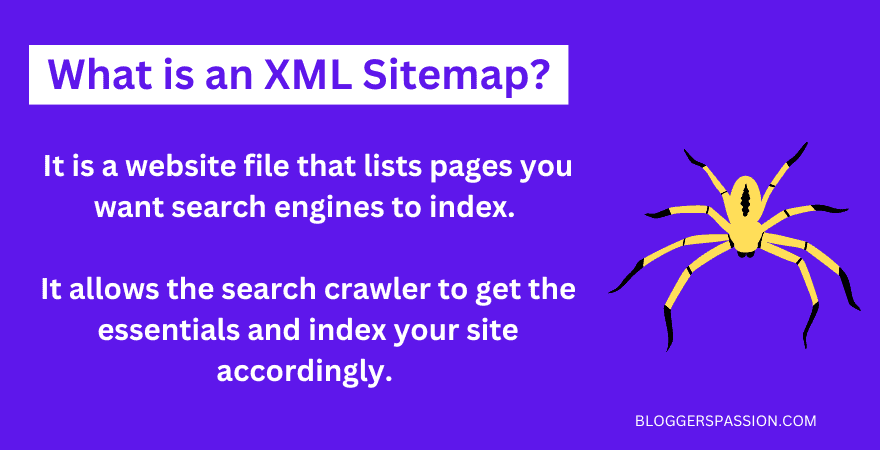
YOY (Year over Year) of the website: It measures the rate of a website’s growth year-over-year that compares a statistic for one time period. It can be used to compare traffic levels, average session time, bounce rate, etc.
Zero-click searches: These are words, phrases, or search queries that result in a direct answer from the search engines like Google. Searchers do not have to click on any results, as these searches show quick answers.
FAQs | SEO Terms & SEO Vocabulary
Here are some commonly asked questions about SEO terminologies.
UGC stands for User Generated Content, which is any form of content (text or videos) that is published by the user on a platform. Some of the UGC platforms include YouTube, Facebook, Quora, etc.
Sitelinks are links to other pages within your website that appear under some Google search results.
These are pages of a website that have no internal links pointing to them from within the website.
It is the process of PERMANENTLY redirecting a URL (or web page) to another URL.
It is the process of TEMPORARILY redirecting a URL (or web page) to another URL or page.
Related FREE SEO Resources:
- 25 Mind-Boggling SEO Statistics & SEO Facts for 2023
- 19 Best SEO Blogs 2023 You Shouldn’t Miss Out
- Step By Step SEO Tutorial For Beginners in 2023
- 7 Must-Have SEO Skills for An SEO Professional
- How to Create A Winning Blog SEO Strategy
- Google Search Operators 2023: The ULTIMATE List
- Homepage SEO: A Complete Guide for Beginners
Final thoughts on search engine optimization terms & definitions
The SEO glossary terms are essential to know and understand, especially if you plan to use SEO.
We HIGHLY recommend you bookmark this page, so you can refer to it whenever you find a complex SEO term.
So what do you think about the SEO vocabulary mentioned here? Have any questions? Let us know in the comments.
